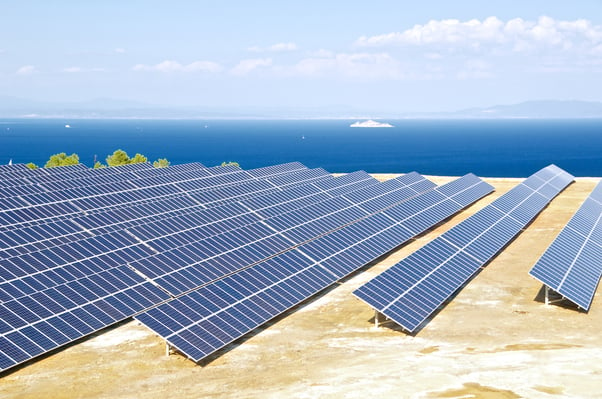Energy storage systems have promising applications in the clean energy sector. They can eliminate the main limitation of wind turbines and solar panels, which is their intermittent production. When a battery pack is added to a renewable energy system, power supply can continue even when there is no generation.
The use of energy storage systems is still limited by their high price. However, the International Renewable Energy Agency (IRENA) has estimated that costs could fall by up to 60% by 2030. Another significant challenge is sourcing enough rare earths for large-scale battery production, which requires extensive mining. extensive. Additionally, because battery storage is an emerging technology, there are still many safety concerns regarding its use.
Reduce your energy bills with energy efficiency and renewable generation.
Projects and programs that combine clean energy with batteries
The Skeleton Creek facility is an exciting project planned for completion in Oklahoma by the end of 2023. The facility will include 250 MW of solar power, 250 MW of wind power, and 250 MW of battery power. Additionally, the battery system can store 800,000 kWh. The project is being developed by NextEra Energy Resources and will provide electricity and grid services to Western Farmers Electric Cooperative.
- The wind project will be installed first to claim the Production Tax Credit (PTC).
- Since 2018, the PTC has only applied to wind energy and will no longer be available from 2020. However, wind energy projects that begin construction in 2019 can claim it, even if they are not completed this year.
- On the other hand, the solar park and battery system will benefit from the Investment Tax Credit (ITC), which is available until the end of 2021.
Based on developer analysis, the Skeleton Creek hybrid project is more cost-effective than adding natural gas plants at peak production. The business case is improved with the two tax credits: the PTC reduces the tax burden on wind generation for 10 years, while the ITC reduces the initial cost of solar and batteries. Batteries have two significant advantages over gas peaking plants: a faster response and the ability to absorb excess production from renewable energy.

Hawaiian Electric also has ambitious plans for clean energy with energy storage. The company plans to close a 203 MW coal plant and a 37.6 MW oil plant by 2024. Instead of investing in new fossil fuel generation, it plans to use a combination of renewable generation, energy storage and grid services intelligent.
- Projects in planning include 240 MW of pure storage, 200 MW of grid services such as frequency regulation and 900 MW of renewable generation with storage.
- Hawaii has one of the most ambitious clean energy goals in the U.S., aiming for 100% renewable generation by 2045.
The islands represent an excellent market for renewable generation with energy storage. Conventional generation relies on expensive fuel supplies, while solar panels and wind turbines take advantage of local resources. Being surrounded by the sea also brings the advantages of sea wind and fewer terrain features that block sunlight.

The Northeastern US is emerging as a promising market for energy storage. New York and its neighboring states have strong clean energy policies, and this is a key factor driving investment in renewable generation and battery systems.
- The Solar Massachusetts Renewable Target (SMART) offers incentives for customers with solar energy systems, and the incentive increases if energy storage is added. The program already has 130 MW of planned storage capacity.
- In New Hampshire, Liberty Utilities and Eversource are developing programs to mitigate demand spikes with behind-the-meter energy storage.
- New Jersey plans to install 2 gigawatts of energy storage capacity by 2030.
- New York has an even more ambitious goal of 3 GW by 2030. There is also a statewide Green New Deal that aims to reduce building emissions by 40% by 2030. Renewable generation and battery storage can help achieve this goal .
- In Vermont, Green Mountain Power rents Tesla Powerwalls to its customers for $15/month. The program has worked: customers saved more than $600,000 in 2018, with just 610 units in operation.
Making battery systems safer
Lithium-ion batteries are more efficient and durable than conventional lead-acid batteries. However, they have limitations like any technology. In particular, lithium-ion batteries can experience thermal runaway when they are overcharged or subjected to excessive current. This should not be a problem if the battery has adequate controls, but the risk cannot be ignored. When a battery suffers thermal runaway it can reach temperatures above 400°C, easily starting a fire. As batteries reach a larger market, fire protection systems must be updated accordingly.
The National Fire Protection Association is working on the NFPA 855 Standard for the Installation of Stationary Energy Storage Systems (ESS). The main objective of this standard is to address fire safety concerns around distributed energy storage systems, and the planned publication date is August 2020. Thermal runaway is one of the main topics covered, and the standard also addresses faults control, ventilation and protection failures. battery systems against voltage surges and short circuits.
As the cost of batteries decreases and their use becomes standardized, their viability will tend to improve. Large-scale use of batteries will likely begin in regions with expensive electricity, as the increased savings potential offsets the high initial cost. If the price of electricity from a hybrid solar + battery system can exceed the local electricity tariff, the investment becomes viable.

